Abstract
Different strains of Thiobacillus ferrooxidans and Thiobacillus thiooxidans were used to catalyze the oxidative dissolution of iron pyrite, FeS2, in nine different coal samples. Kinetic variables and parametric factors that were determined to have a pronounced effect on the rate and extent of oxidative dissolution at a fixed Po2 were: the bacterial strain, the nitrogen/phosphorus molar ratio, the partial pressure of CO2, the coal source, and the total reactive surface area of FeS2. The overall rate of leaching, which exhibited a first-order dependence on the total surface area of FeS2, was analyzed mathematically in terms of the sum of a biochemical rate, ν1, and a chemical rate, ν2. Results of this study show that bacterial desulfurization (90 to 98%) of coal samples which are relatively high in pyritic sulfur can be achieved within a time-frame of 8 to 12 days when pulp densities are ≤20% and particle sizes are ≤74 μm. The most effective strains of T. ferrooxidans were those that were isolated from natural systems, and T. ferrooxidans ATCC 19859 was the most effective pure strain. The most effective nutrient media contained relatively low phosphate concentrations, with an optimal N/P molar ratio of 90:1. These results suggest that minimal nutrient additions may be required for a commercial desulfurization process.
Full text
PDF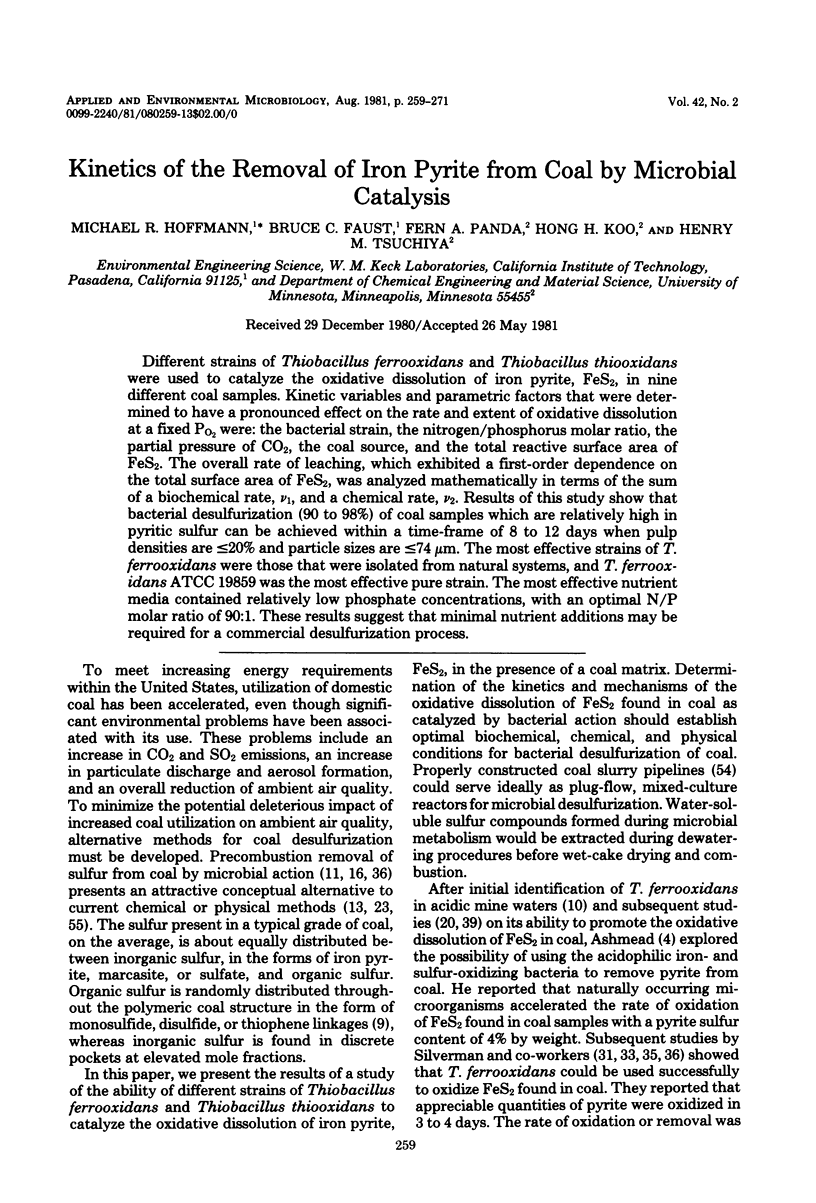
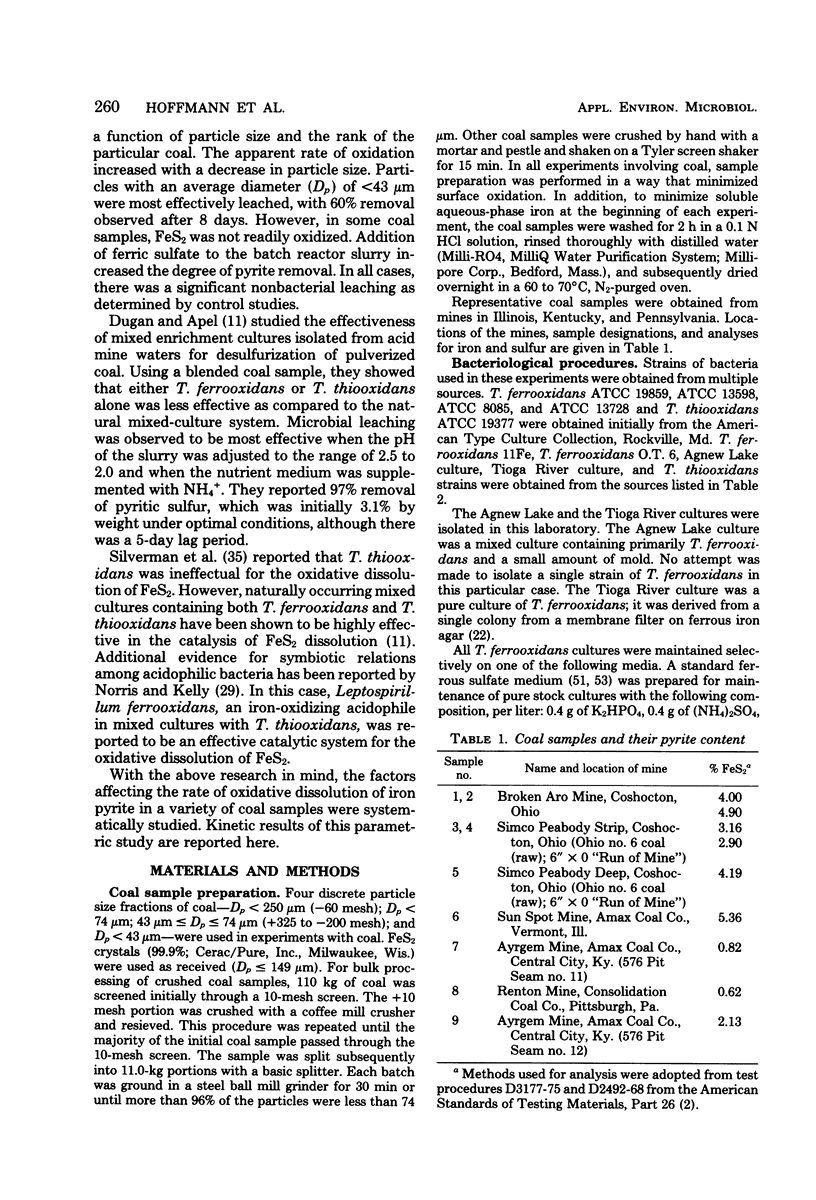
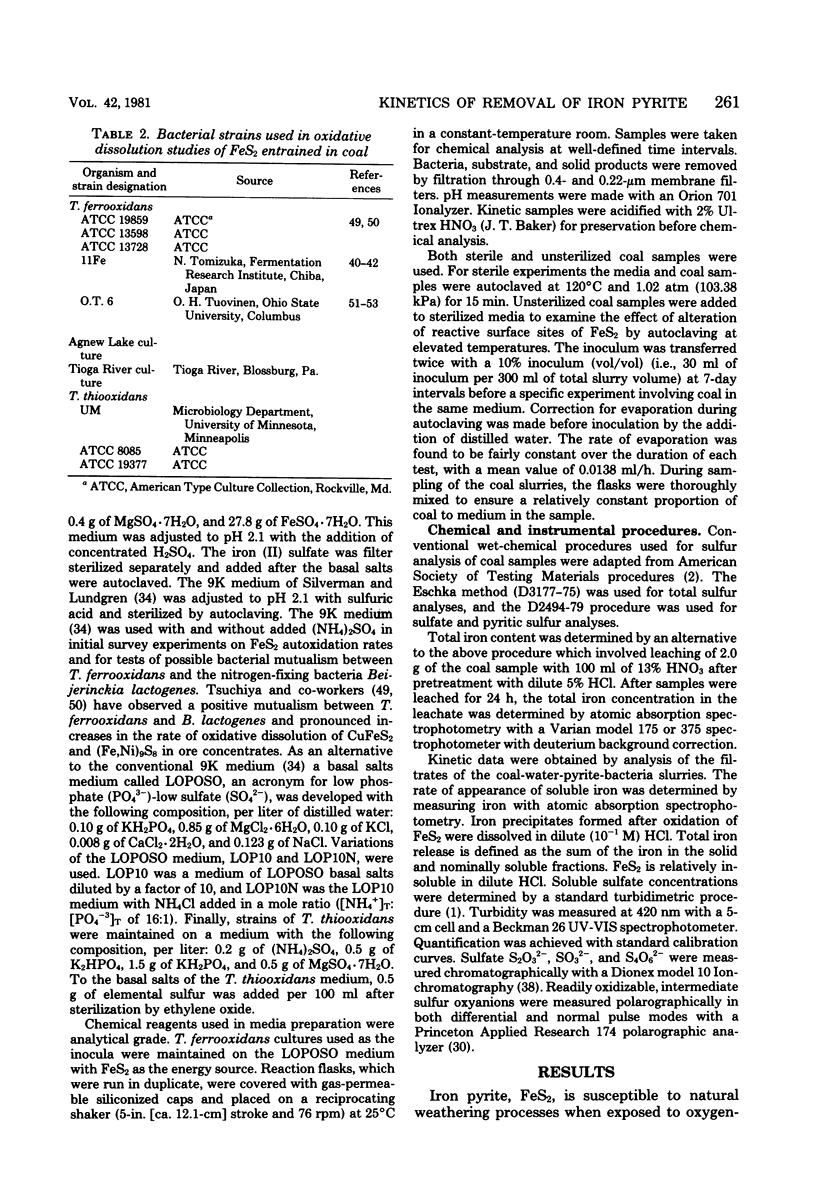
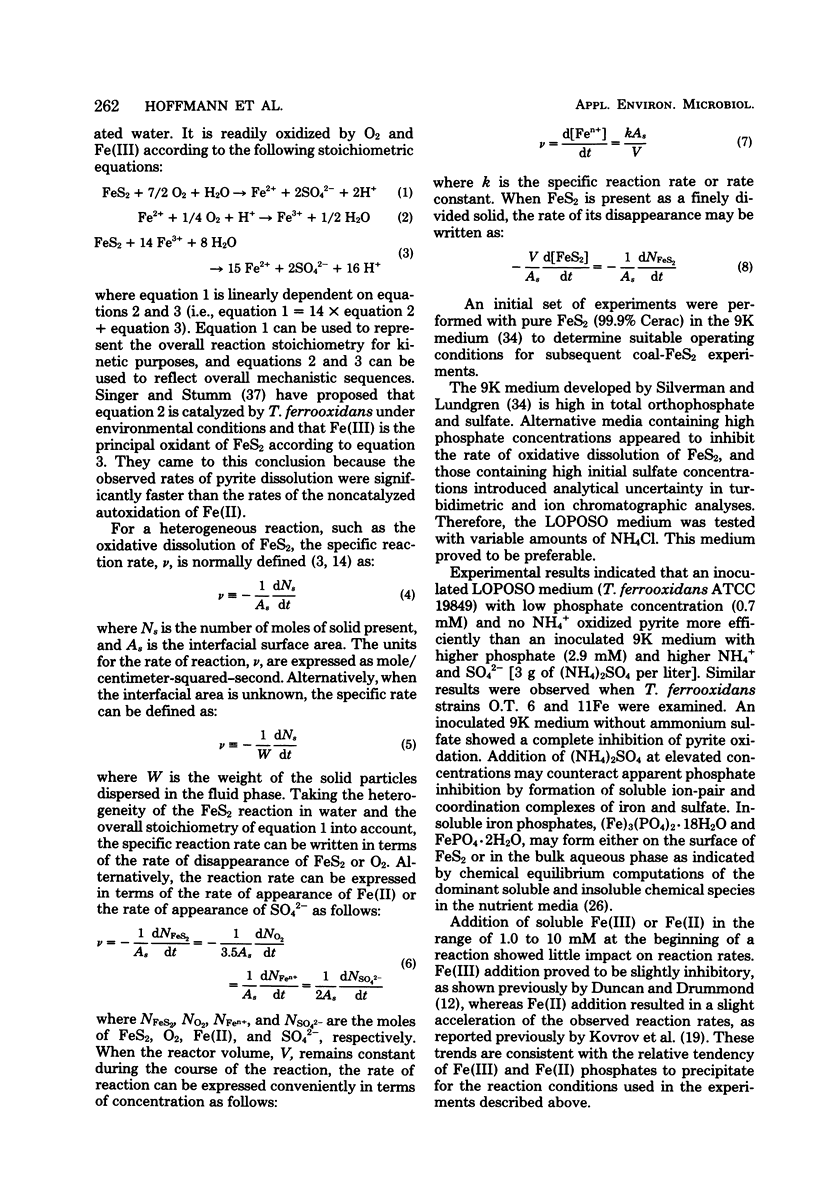
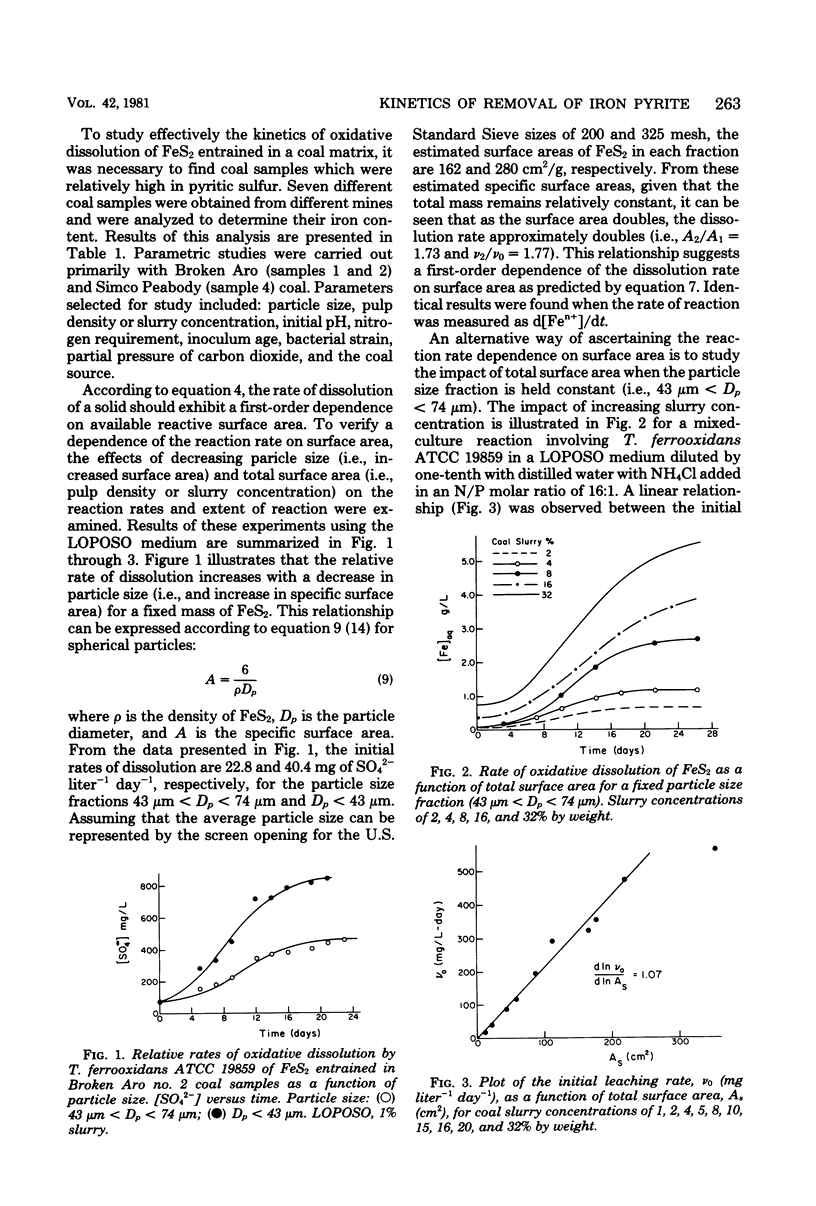
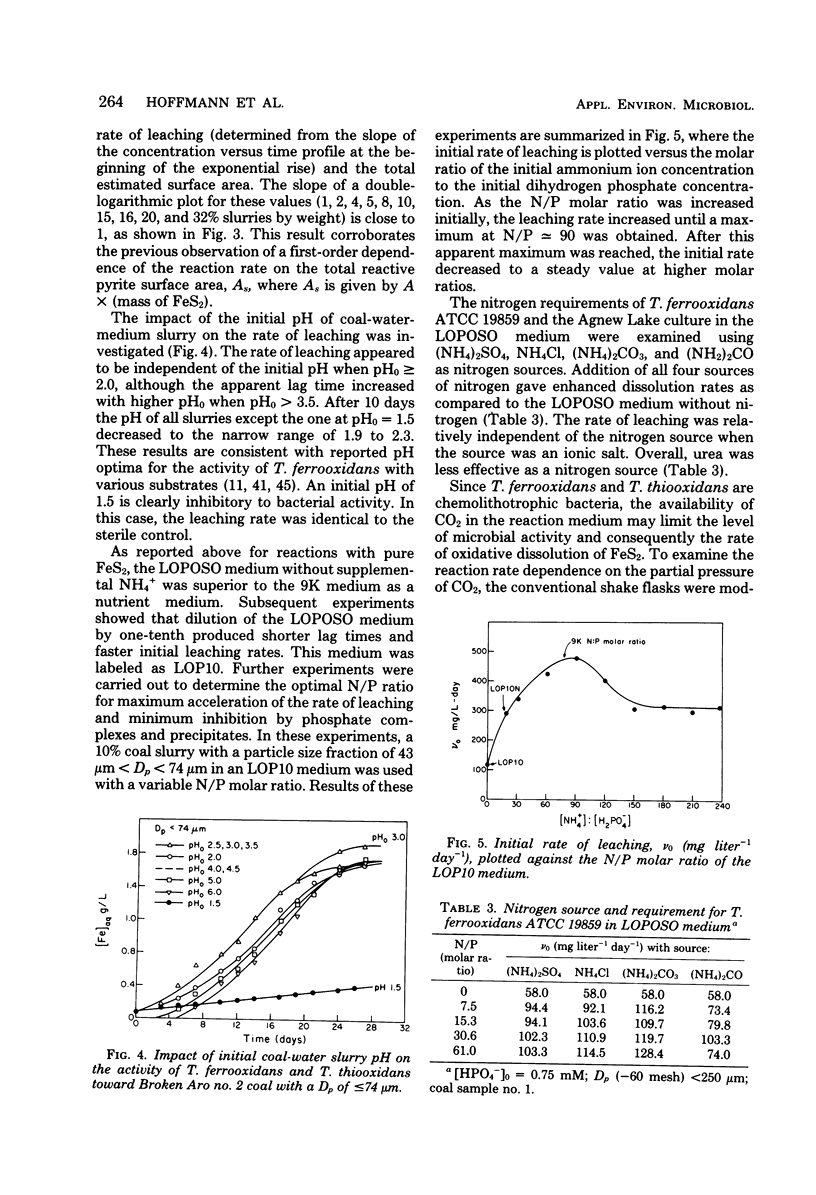
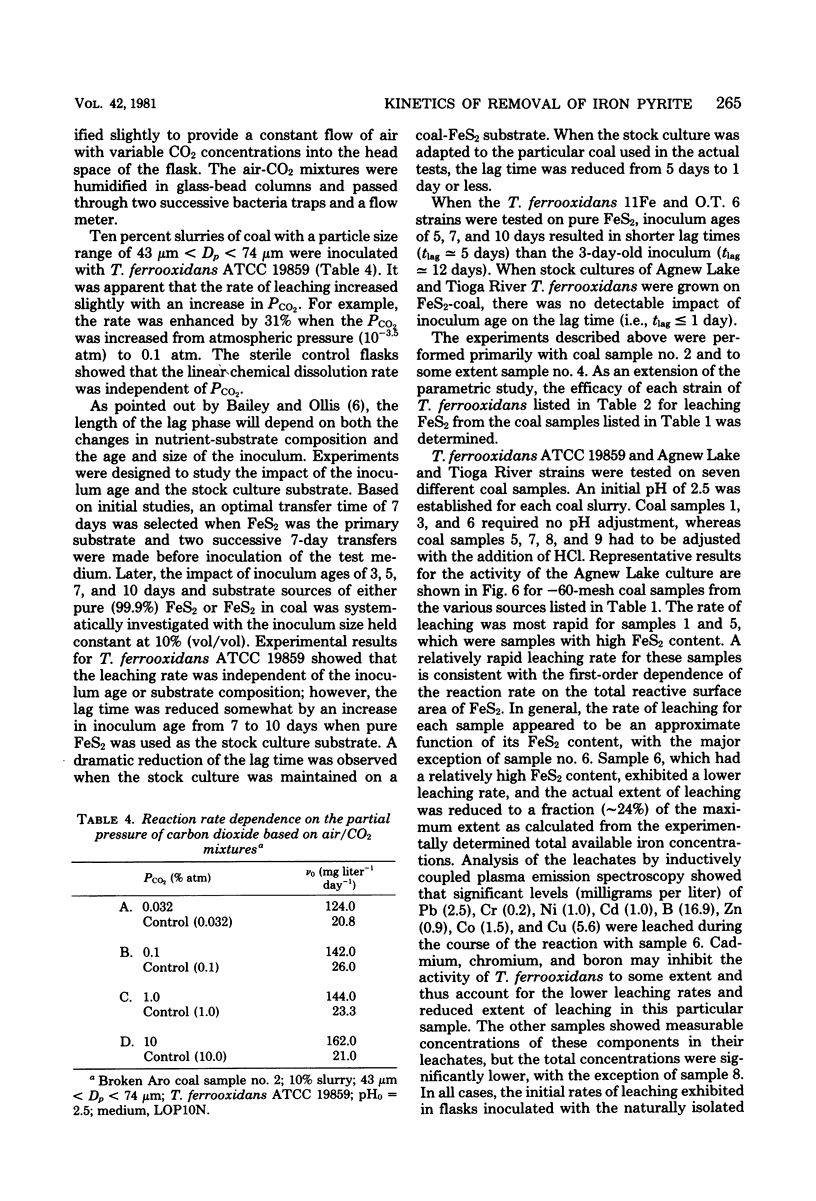
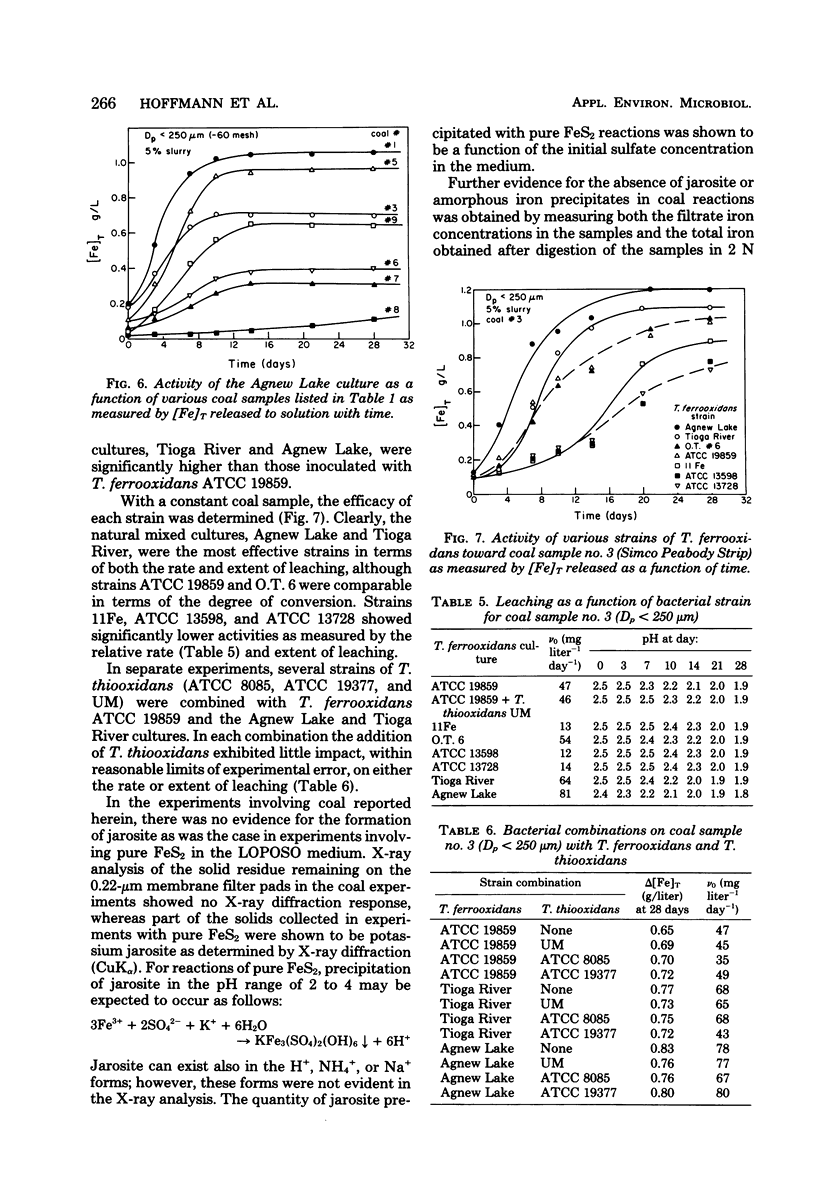
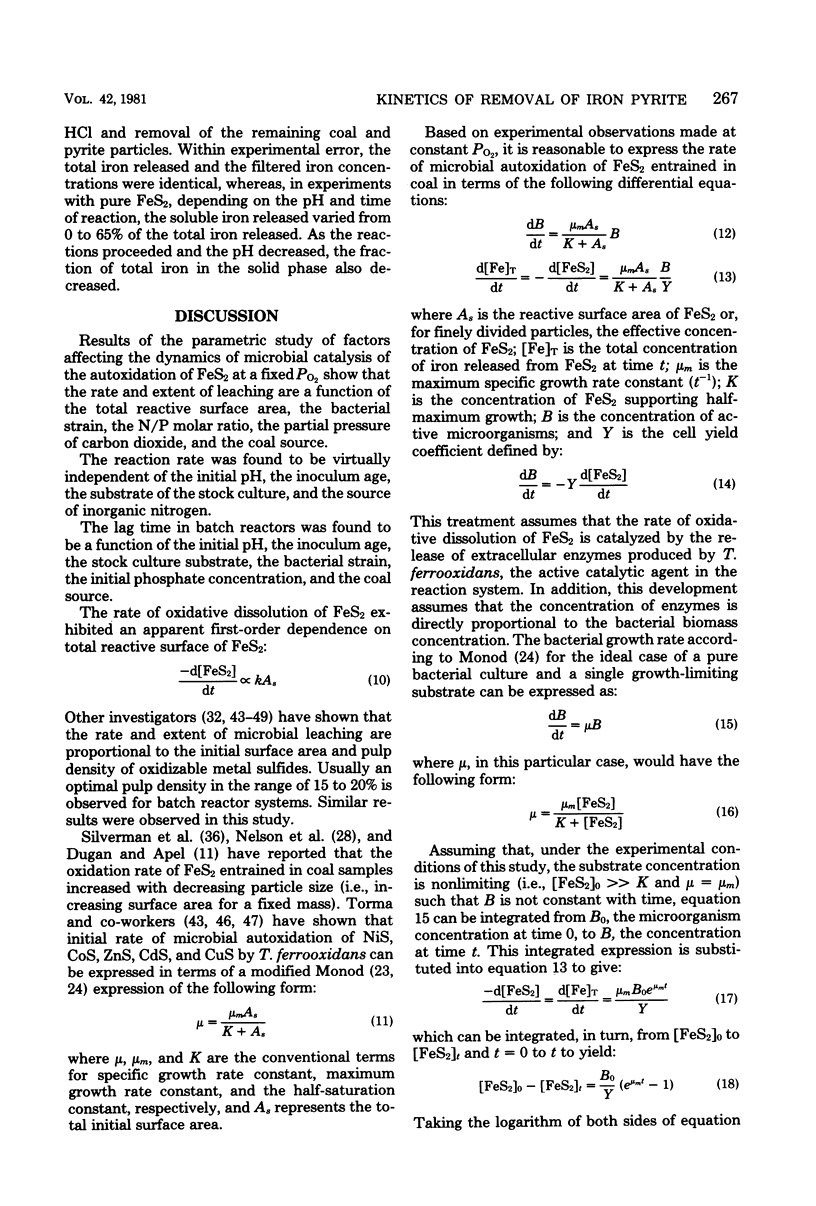
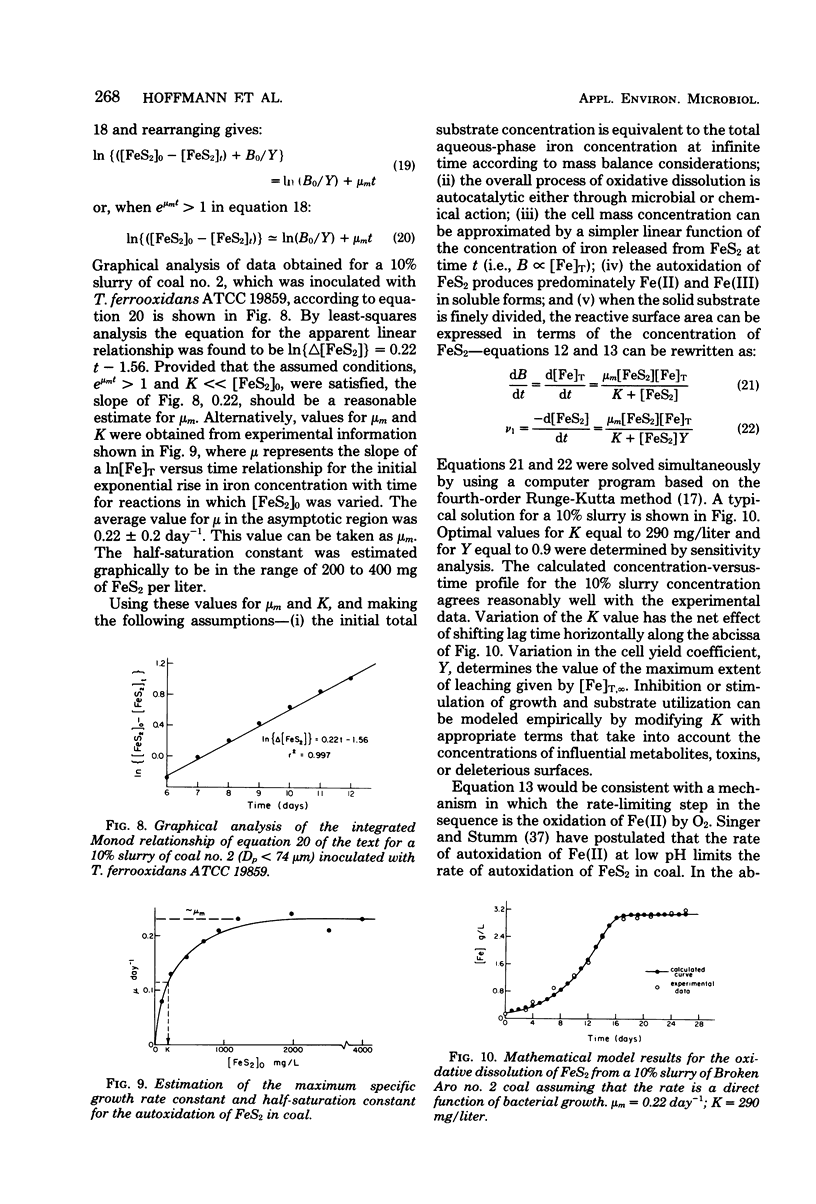
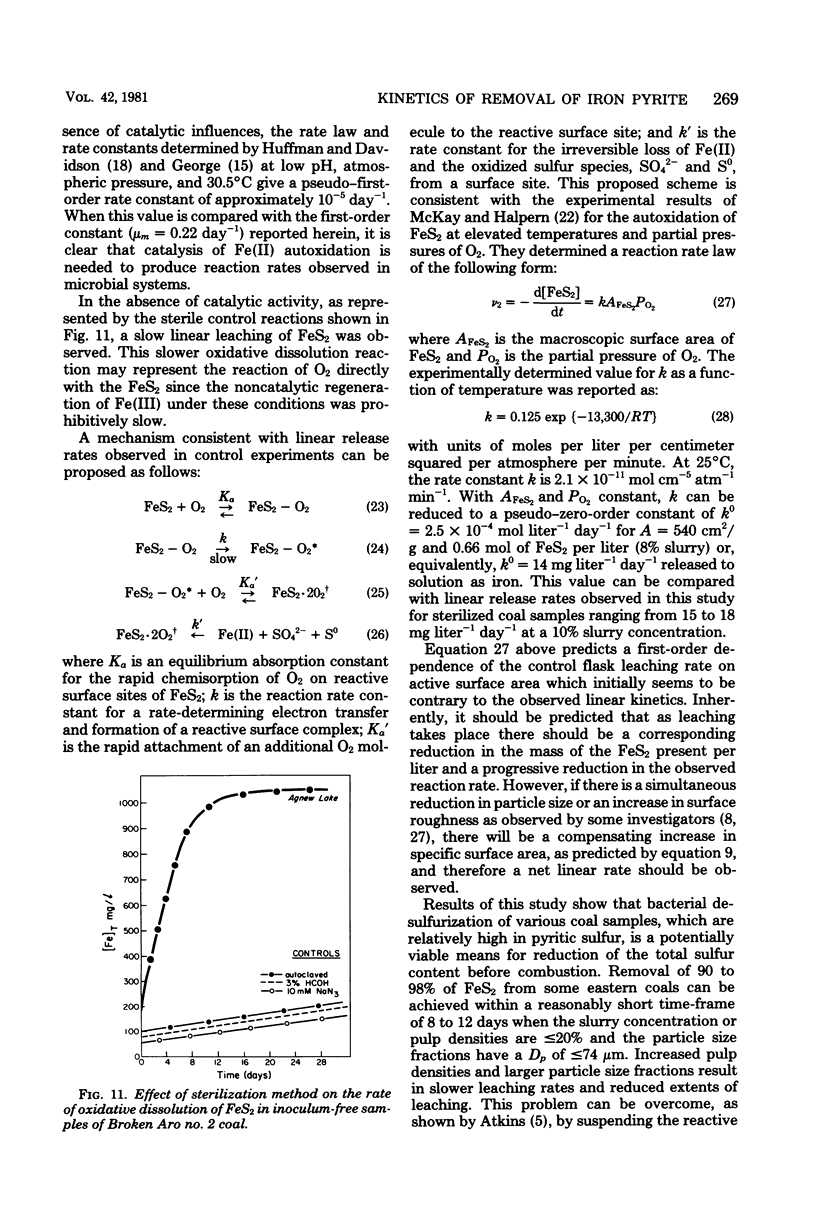
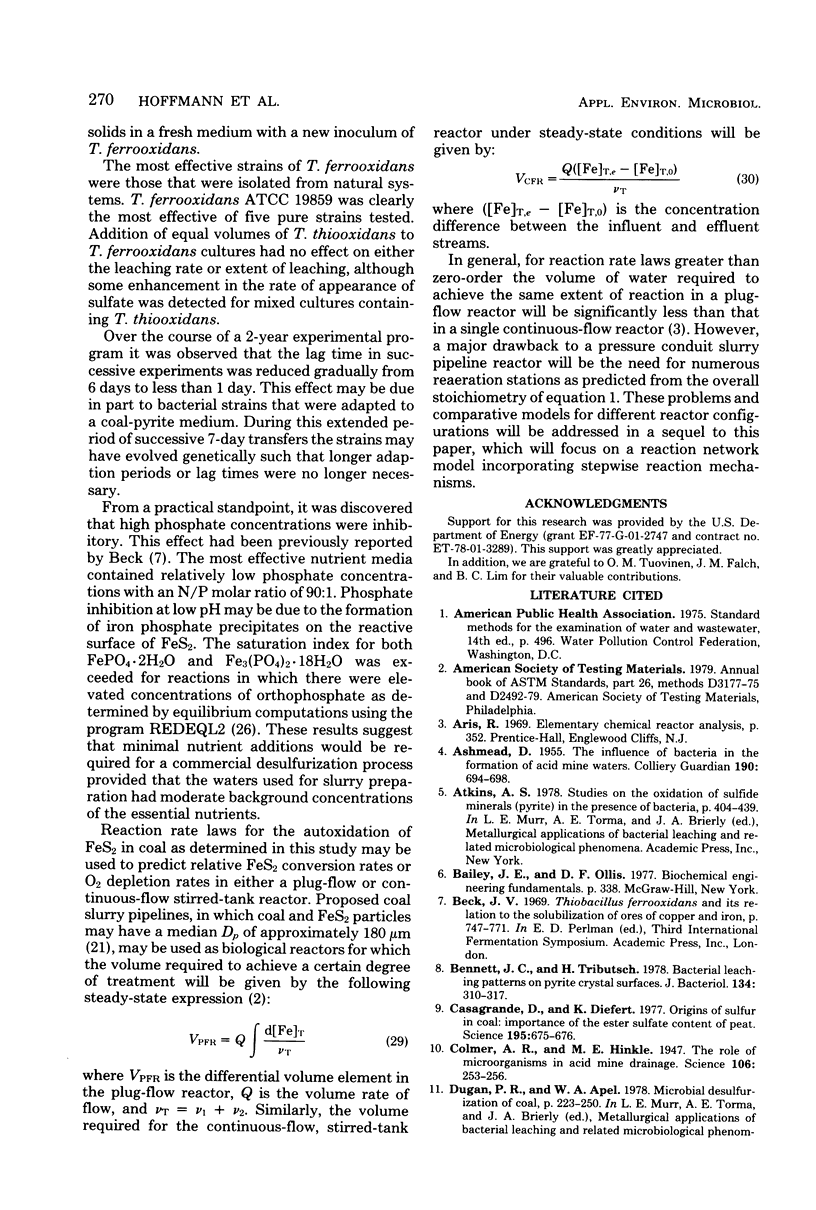
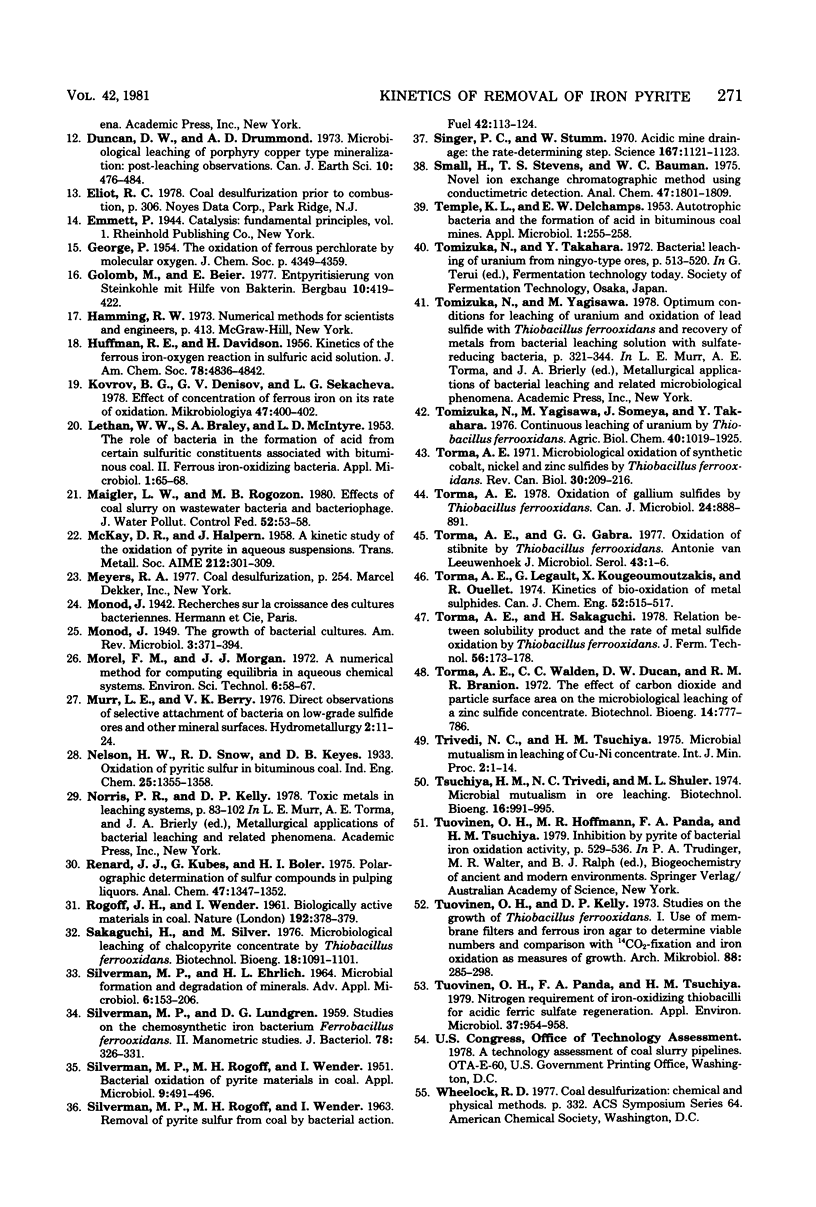
Selected References
These references are in PubMed. This may not be the complete list of references from this article.
- Bennett J. C., Tributsch H. Bacterial leaching patterns on pyrite crystal surfaces. J Bacteriol. 1978 Apr;134(1):310–317. doi: 10.1128/jb.134.1.310-317.1978. [DOI] [PMC free article] [PubMed] [Google Scholar]
- Casagrande D., Siefert K. Origins of sulfur in coal: importance of the ester sulfate content of peat. Science. 1977 Feb 18;195(4279):675–676. doi: 10.1126/science.195.4279.675. [DOI] [PubMed] [Google Scholar]
- Colmer A. R., Hinkle M. E. The Role of Microorganisms in Acid Mine Drainage: A Preliminary Report. Science. 1947 Sep 19;106(2751):253–256. doi: 10.1126/science.106.2751.253. [DOI] [PubMed] [Google Scholar]
- Kovrov B. G., Denisov G. V., Sekacheva L. G. Zavisimost' skorosti okisleniia zakisnogo zheleza kul'turoi Thiobacillus ferrooxidans ot ego kontsentratsii. Mikrobiologiia. 1978 May-Jun;47(3):400–402. [PubMed] [Google Scholar]
- LEATHEN W. W., BRALEY S. A., Sr, MCINTYRE L. D. The role of bacteria in the formation of acid from certain sulfuritic constituents associated with bituminous coal. II. Ferrous iron oxidizing bacteria. Appl Microbiol. 1953 Mar;1(2):65–68. doi: 10.1128/am.1.2.65-68.1953. [DOI] [PMC free article] [PubMed] [Google Scholar]
- SILVERMAN M. P., LUNDGREN D. G. Studies on the chemoautotrophic iron bacterium Ferrobacillus ferrooxidans. II. Manometric studies. J Bacteriol. 1959 Sep;78:326–331. doi: 10.1128/jb.78.3.326-331.1959. [DOI] [PMC free article] [PubMed] [Google Scholar]
- Sakaguchi H., Silver M. Microbiological leaching of a chalcopyrite concentrate by Thiobacillus ferrooxidans. Biotechnol Bioeng. 1976 Aug;18(8):1091–1101. doi: 10.1002/bit.260180806. [DOI] [PubMed] [Google Scholar]
- Silverman M. P., Rogoff M. H., Wender I. Bacterial Oxidation of Pyritic Materials in Coal. Appl Microbiol. 1961 Nov;9(6):491–496. doi: 10.1128/am.9.6.491-496.1961. [DOI] [PMC free article] [PubMed] [Google Scholar]
- Singer P. C., Stumm W. Acidic mine drainage: the rate-determining step. Science. 1970 Feb 20;167(3921):1121–1123. doi: 10.1126/science.167.3921.1121. [DOI] [PubMed] [Google Scholar]
- TEMPLE K. L., DELCHAMPS E. W. Autotrophic bacteria and the formation of acid in bituminous coal mines. Appl Microbiol. 1953 Sep;1(5):255–258. doi: 10.1128/am.1.5.255-258.1953. [DOI] [PMC free article] [PubMed] [Google Scholar]
- Torma A. E., Gabra G. G. Oxidation of stibnite by Thiobacillus ferrooxidans. Antonie Van Leeuwenhoek. 1977;43(1):1–6. doi: 10.1007/BF02316204. [DOI] [PubMed] [Google Scholar]
- Torma A. E. Microbiological oxidation of synthetic cobalt, nickel and zinc sulfides by Thiobacillus ferrooxidans. Rev Can Biol. 1971 Sep;30(3):209–216. [PubMed] [Google Scholar]
- Torma A. E. Oxidation of gallium sulfides by Thiobacillus ferrooxidans. Can J Microbiol. 1978 Jul;24(7):888–891. doi: 10.1139/m78-148. [DOI] [PubMed] [Google Scholar]
- Tsuchiya H. M., Trivedi N. C., Schuler M. L. Letter: Microbial mutualism in ore leaching. Biotechnol Bioeng. 1974 Jul;16(7):991–995. doi: 10.1002/bit.260160711. [DOI] [PubMed] [Google Scholar]
- Tuovinen O. H., Kelly D. P. Studies on the growth of Thiobacillus ferrooxidans. I. Use of membrane filters and ferrous iron agar to determine viable numbers, and comparison with 14 CO 2 -fixation and iron oxidation as measures of growth. Arch Mikrobiol. 1973;88(4):285–298. [PubMed] [Google Scholar]
- Tuovinen O. H., Panda F. A., Tsuchiya H. M. Nitrogen requirement of iron-oxidizing thiobacilli for acidic ferric sulfate regeneration. Appl Environ Microbiol. 1979 May;37(5):954–958. doi: 10.1128/aem.37.5.954-958.1979. [DOI] [PMC free article] [PubMed] [Google Scholar]


